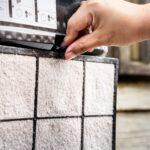We’ll get right to it: Yes, you should cover your air conditioner at the end of the A/C season. But it’s important to do it the right way.
In this post, we tell you how.
And while we’re on the subject of winterizing your air conditioner, there are a few more things you should know. We’ll discuss them all in this post:
- Who needs to winterize their air conditioner
- Why you should cover your air conditioner
- How to cover your air conditioner
- Two extra steps to take to protect your air conditioner over the winter
Let’s get going!
Who Needs to Winterize Their Air Conditioner?
First things first. Do you even need to think about covering or winterizing your air conditioner?
You do, if any of the following are true:
You live in a place where there’s winter weather.
To state the obvious, if your area gets sustained cold temperatures – as we do here in Pittsburgh – it’s a good idea to “close down” your air conditioner for the months you don’t use it.
Now, if you live in a warmer climate, you probably use your air conditioning throughout most or all of the year. In this case, you don’t need to winterize it. But you should schedule regular maintenance for it since the demand on it is constant.
You have a central air conditioning system.
Central air conditioning has an outdoor component: the compressor unit, which also contains the condenser, the fan, and coils for power and refrigerant.
When we talk about winterizing your air conditioner, we’re referring to this outdoor compressor unit for central A/C.
You’re a Snowbird.
If you spend the winter months away from your home, you want to protect your air conditioner during your absence. Winterizing your A/C keeps it safe from any damage you won’t be there to address, plus ensures it’s ready to run smoothly when you return.
A trustworthy HVAC pro can winterize your air conditioner for you if you leave town before it’s time to do this.
Why Cover Your Air Conditioner?
Air conditioners are durable. They are designed to be outside, so they are made of materials that withstand severe weather and extreme temperatures.
So why cover yours?
For two reasons:
To protect it from falling ice
Your compressor unit is positioned right outside your home, likely under gutters or eaves. When ice forms on these, breaks off and falls onto the compressor, the impact is forceful. And the resulting damage can be severe.
Then, if ice sits on the unit and melts, the evaporator and condenser coils can corrode. Over time, corrosion causes cracks and leaks. This eventually means costly repairs.
Snow brings the same concern. A dusting is fine. Prolonged accumulation on your compressor is not. A cover keeps the moisture from seeping into your equipment.
To keep out leaves and debris
A few falling leaves are not much trouble for an air conditioner. Again, compressor units are durable. But a pile of leaves that gathers and sits on the compressor can set problems in motion. The leaves eventually get wet, which encourages mold growth.
Even so, a maintenance service call in the spring can remove the leaves and the mold. A good HVAC company will use a special cleaner that strips organic matter from A/C components while preserving their integrity.
But an ounce of prevention is worth a pound of cure. A cover protects the compressor unit from leaves and mold and saves the work of removing both.
How to Cover Your Air Conditioner
The best way to cover your compressor unit is also the most affordable way: with plywood.
Here’s what you do:
- Measure the width and length of the top surface of your compressor unit.
- At a hardware or lumber store, purchase a sheet of half-inch plywood that’s the same size or slightly larger.
- Place the plywood on top of the compressor unit.
- Add a few bricks or heavy rocks on top to secure it in place.
That’s it.
You may be wondering about fitted covers for air conditioners. Home improvement stores sell them. Some HVAC manufacturers also offer covers tailored specifically for their products.
Don’t use fitted A/C covers, even if they’re advertised as breathable. Most quality HVAC manufacturers recommend against them.
This is because fully covering your compressor unit causes two problems:
- It traps moisture, which leads to both corrosion and mold on your A/C components.
- It creates a warm and welcoming environment for rodents who would enjoy making their winter home inside the cover. Rodents will chew A/C coils and leave their waste inside your compressor.
Most HVAC companies will tell you that every spring, the culprit behind many A/C service calls are gnarled, frayed compressor coils. These are the parting gifts of nesting critters. Replacing these coils is usually a quick and easy fix, but that’s not a guarantee. So again, an ounce of prevention is worth a pound of cure.
To sum it up, a plywood cover for the top of your compressor unit is your best bet. It gives your air conditioner the protection and fresh air it needs. It also saves you money – it’s inexpensive, and it keeps you from making too many A/C repairs too soon.
Two Extra Winterizing Steps for Your A/C
1. Power off your air conditioning system.
Even when your thermostat is set to “heat” or “off,” you should still take the extra step of shutting down power to your air conditioning system.
This is because when power is still running to the compressor, the high-voltage electricity creates some warmth in the unit, even when it’s not on. And this warmth attracts the same critters who would love a fitted cover.
Also, if someone accidentally sets the thermostat to “cool” in freezing temperatures, your compressor could suffer damage. A damaged compressor can be an expensive fix. Often a full A/C replacement is a better value.
So, how do you power down your air conditioning system?
The best way to power down your air conditioner is to shut it off using its switch on the main circuit breaker for your home.
Some HVAC companies suggest powering down your A/C using the connection at the compressor unit itself. We do not recommend doing this.
The connection at the compressor can be difficult to access – it’s often toward the back of the unit – and its cover and switch can be tight. Plus, high-voltage electricity powers your compressor. Avoiding that is always wise unless you are experienced with electrical connections.
2. Schedule a fall maintenance appointment.
This appointment is more about your furnace than your air conditioner. But when you’re closing down your A/C system, it’s a great time to prepare for firing up your heating system.
An HVAC pro can inspect your furnace, clean its parts, tune its performance, change the filter, and confirm adequate airflow in your home. This way, you’ll know that you and your family can stay warm all winter.
Kowalski offers customized maintenance plans that include a furnace tune-up every fall and an air conditioning tune-up every spring. We’ll discuss fall maintenance in our next blog post. Hope to see you here then!
_____________
We hope this post settled the “to cover or not to cover” question for you. We know you might have debated it with your neighbors! We’ve had those same debates, and we stand by our guidance: plywood for the win.
If you have any questions, or if you’d like help winterizing your air conditioner, please contact us any time. We’ll provide the personal attention and custom work you’re looking for. We look forward to hearing from you!





